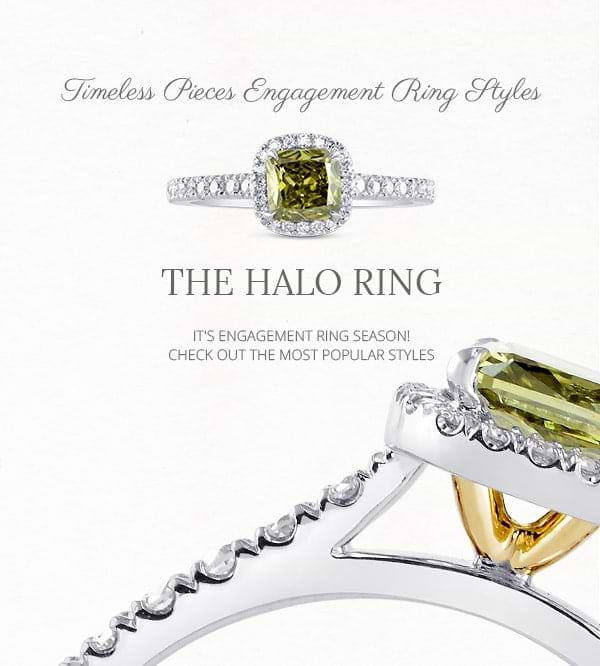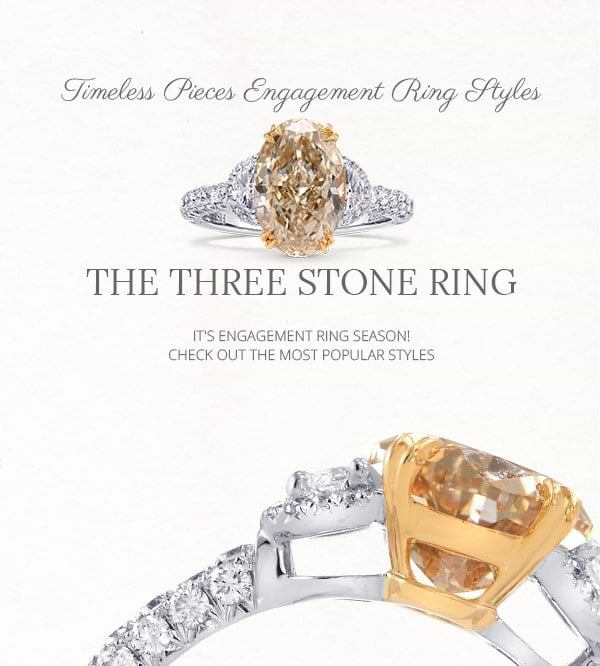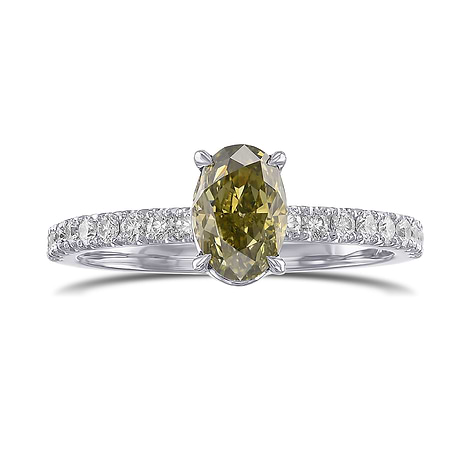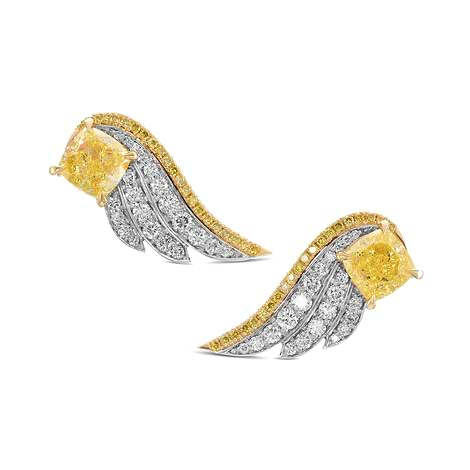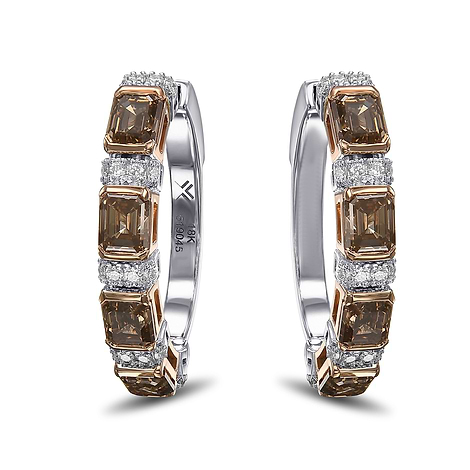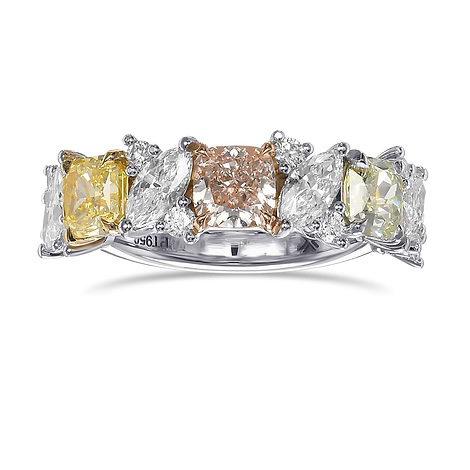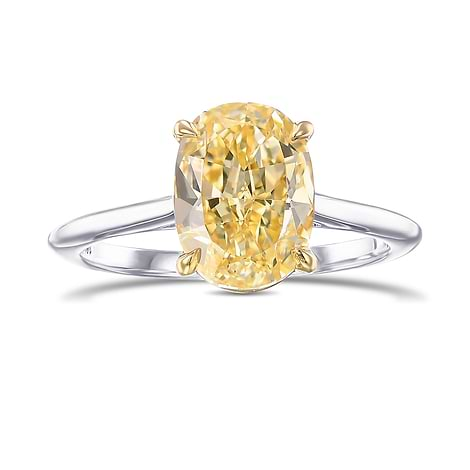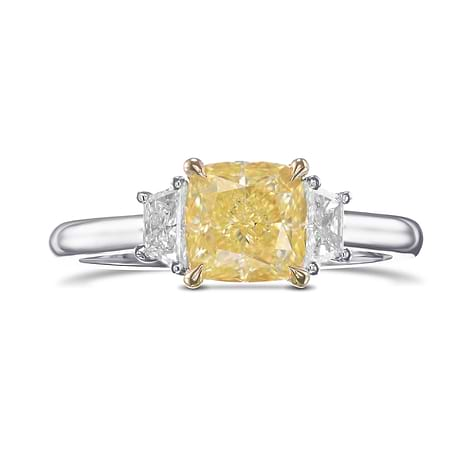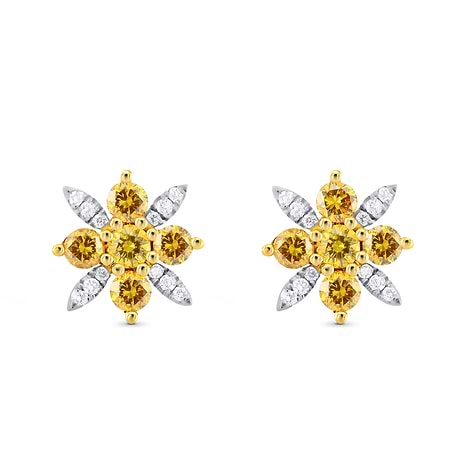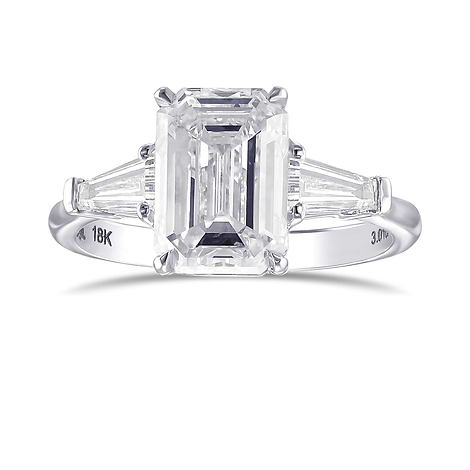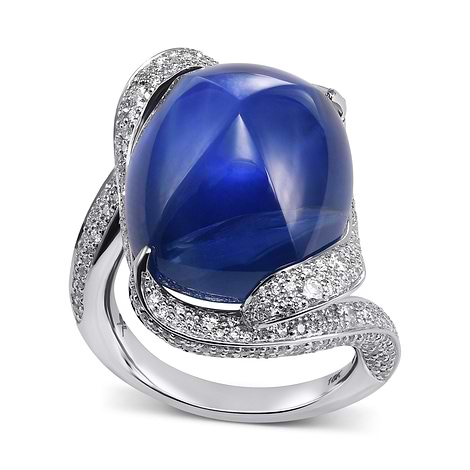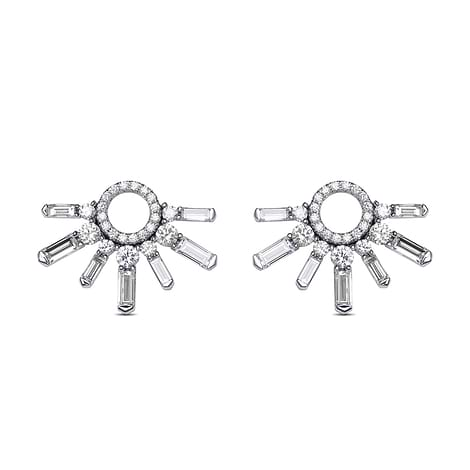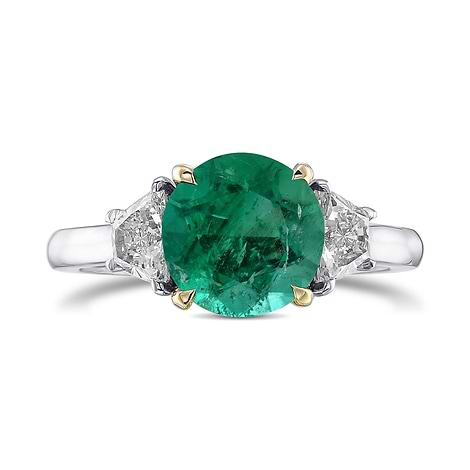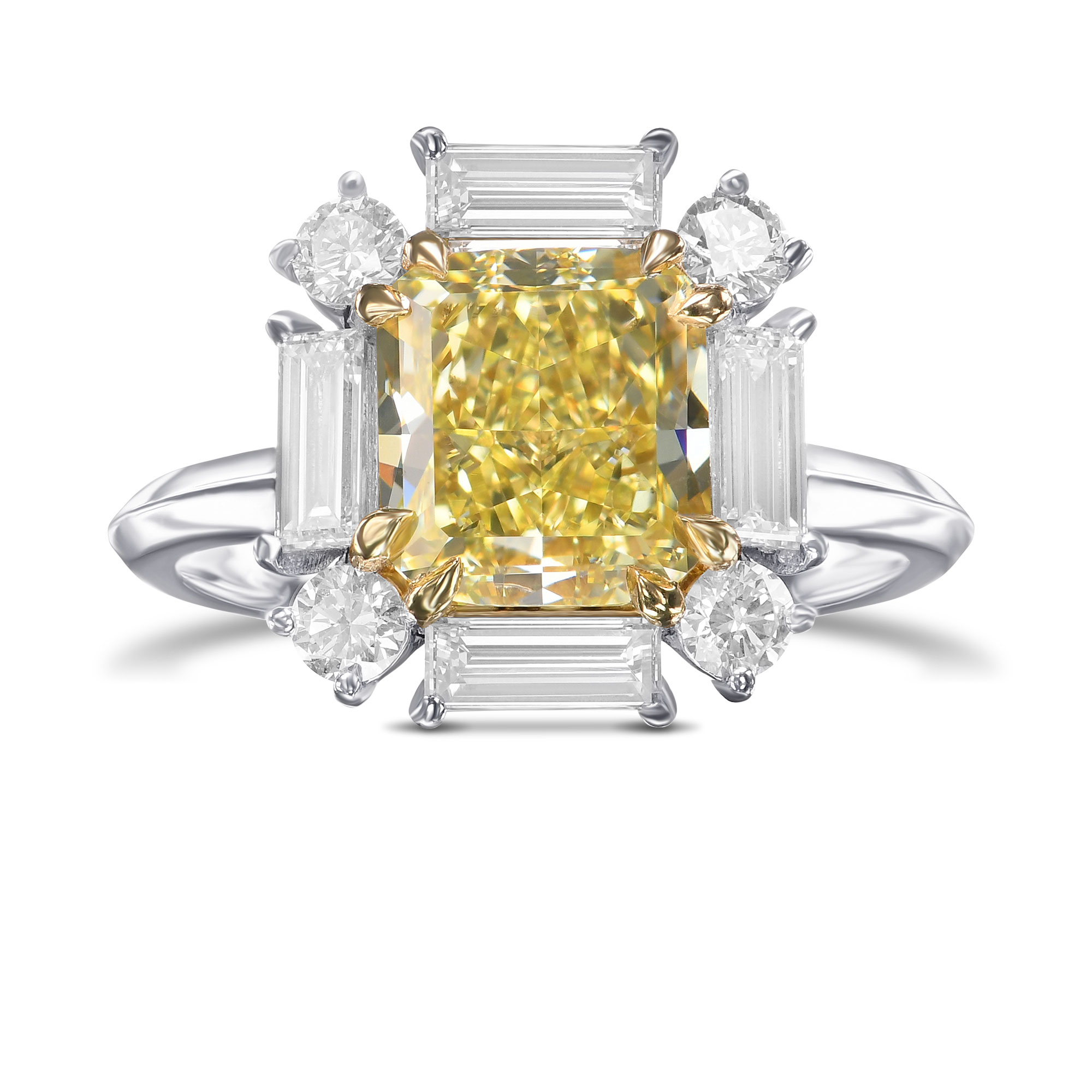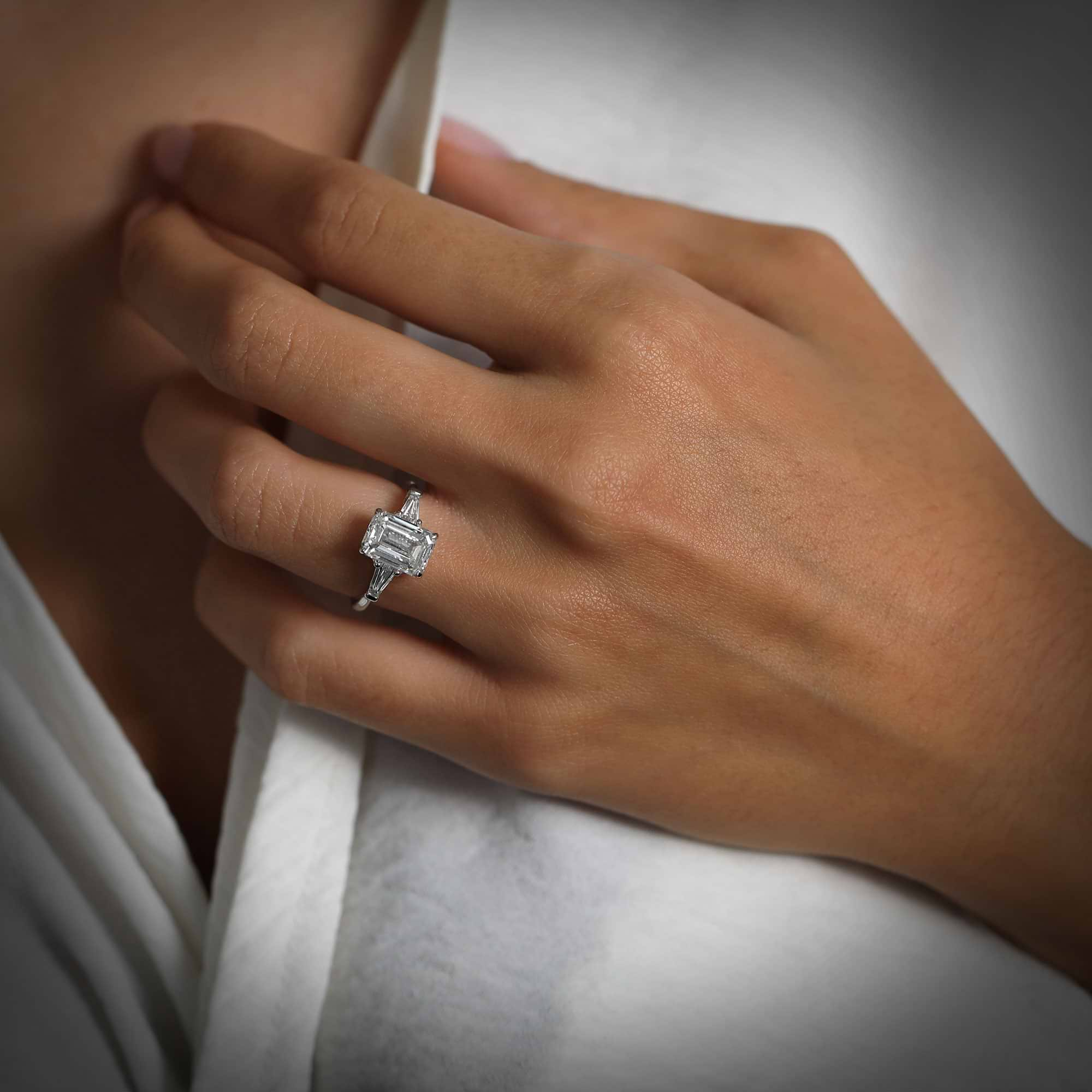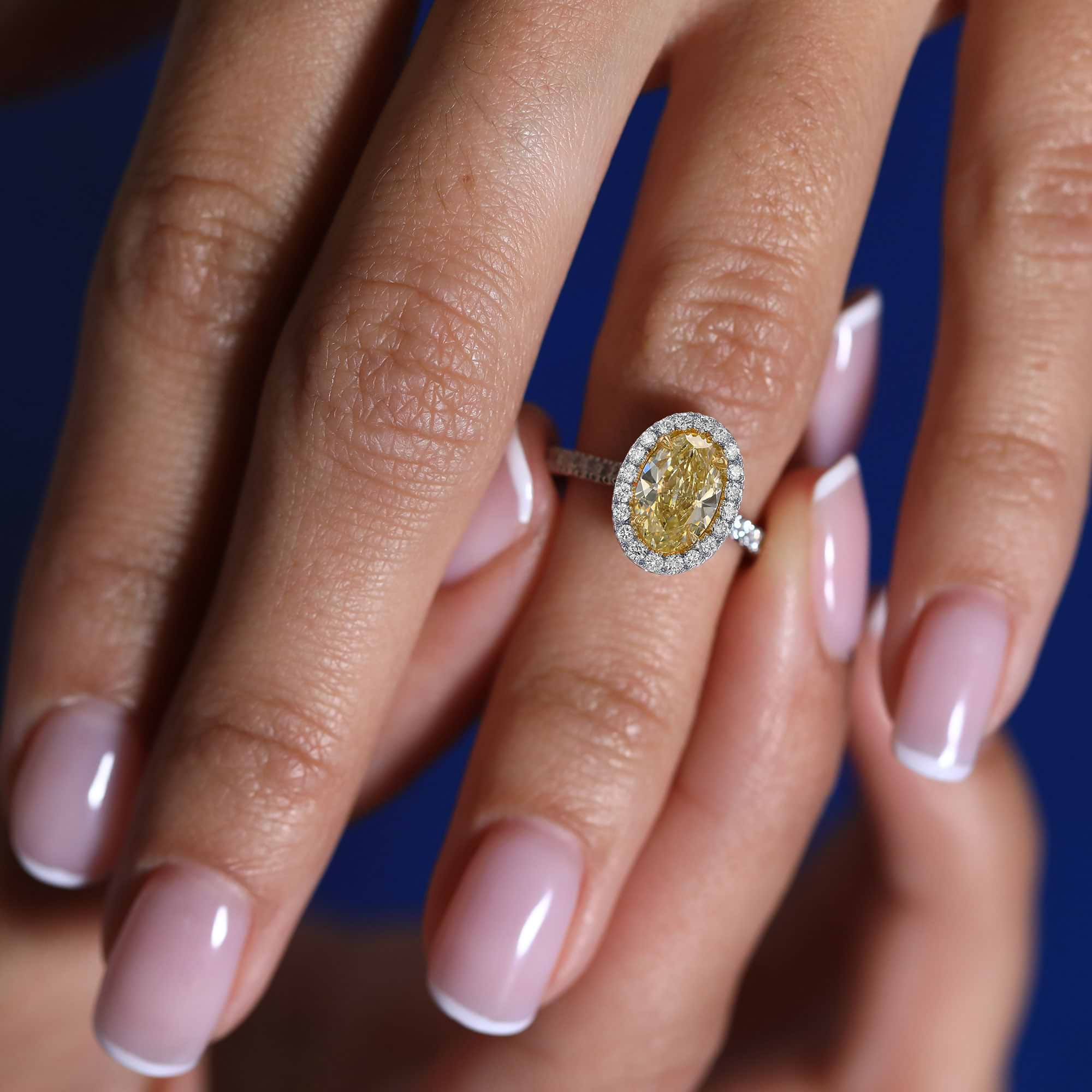Congratulations on finally deciding on the diamond of your dreams! Now comes the exciting task of choosing the perfect setting style to complement your stone. When considering the types of ring settings and mountings, there are four main options to explore: solitaire, halo, three-stone, and side stone.
Of course, custom designs offer endless possibilities, such as this remarkable custom-designed pink diamond dress ring below. However, the most popular styles each have their unique advantages and disadvantages, appealing to different preferences. Let's delve into different ring settings to help you make the best choice.
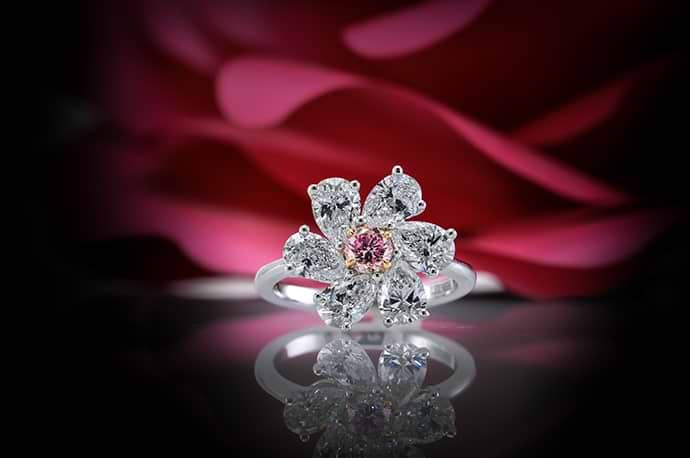
A 2.86 carat Fancy Intense Purplish Pink Custom Designed Diamond Dress Ring
Solitaire
The solitaire ring stands out as the most popular ring mounting type for several reasons. Firstly, it caters to the majority of engagement ring consumers who opt for a single diamond, rendering other types of ring settings and mountings less relevant.
Secondly, the prongs can give a diamond a larger and a more prominent appearance as they can raise the diamond above the band, contrasting a thinner ring with a wider and fuller stone. There are four-pronged settings and six-pronged settings. The former allows more of the diamond to be seen while the latter holds the diamond somewhat more securely. Both options allow more of the diamond to be revealed than the other solitaire setting, the bezel. They also allow more light to enter the diamond resulting in greater brilliance.
The solitaire prong setting is prized for its easy maintenance and timeless elegance. However, a drawback of this type of ring setting and mounting is its tendency to snag on clothing, particularly when set high. Over time, this can lead to loosened prongs and put the center stone at risk. Regular inspections, ideally every two years, are crucial to ensure the security of the diamond.
Conversely, the bezel solitaire setting prioritizes security and is resistant to snagging. Its sleek, modern appearance makes it a great choice for those with an active lifestyle. However, it partially conceals the diamond and reduces its brilliance by limiting light penetration. Consequently, this setting is typically recommended for diamond shapes other than the round brilliant cut.
Solitaire diamond and gemstone ring styles
Halo
Halo diamond rings consist of a main center stone surrounded by a ring of smaller stones. There are many advantages to this ring setting. For one, you can go for a smaller center stone and still achieve a larger diamond look. This can be done by spending less than a larger diamond even with the cost of the smaller diamonds. You can combine different diamond colors or stick with the same color.
Halo diamond and gemstone ring styles
Three-Stone
For those who cannot suffice with just one diamond, a three-stone diamond ring is a great option. The ring can look quite different depending on the sizes of the stones. You can use an average-sized center stone and select much smaller diamonds to put on the side. Or, all of the diamonds can be the same size. They can be small, medium, or large. They can be the same color or contrasting colors such as a pink center stone and two colorless diamonds on each side. The prong or bezel setting can be used for this type of ring setting.
Three-stone diamond and gemstone ring styles
Side Stones
Last but not least, there is the option of mounting your diamond onto a band complete with side stones. This too can be done with a prong setting or a bezel setting. The side stones adorn the band on the sides of the center stone. They can be the same color as the center stone or a different color. They can also alternate colors, such as yellow, colorless, yellow etc.
Side-stone diamond and gemstone rings
Choosing a setting for your diamond ultimately comes down to individual taste and preference. Some women prioritize practicality, while others desire the most extravagant ring possible. However, it's essential not to let lifestyle constraints dictate your choice. If a particular ring captures your heart, don't hesitate to pursue it. After all, it doesn't have to be worn constantly, but it should bring you immense joy.
Opting for practicality over personal preference may result in a ring that sits unworn and unappreciated. Trust your instincts and select your dream setting with the same care you gave to choosing your prized diamond.
Before making any decisions, take the time to explore the various types of ring settings and mountings to familiarize yourself with your options fully.
Check out our engagement ring designs!
FAQ
1. Why is the solitaire ring setting considered the most popular?
The solitaire ring setting holds its popularity for several reasons. Firstly, it offers timeless elegance and versatility, making it suitable for a wide range of personal styles and preferences. Additionally, solitaire settings highlight the beauty of the center diamond, allowing it to take center stage without distraction. This minimalist design also ensures that the focus remains solely on the diamond, enhancing its brilliance and sparkle. Moreover, solitaire settings are relatively easy to maintain and can accommodate various diamond shapes and sizes, contributing to their enduring popularity.
2. Are there any specific recommendations for choosing a ring setting based on diamond shape?
Absolutely. The different types of ring settings should complement the unique characteristics of the diamond shape to maximize its beauty and appeal. For instance, round brilliant diamonds typically shine brightest in prong settings, which allow maximum light exposure to enhance their brilliance. On the other hand, fancy-shaped diamonds like princess or pear cuts may benefit from bezel settings, offering additional protection while showcasing their distinctive outlines. It's essential to consider the interplay between the diamond's shape, types of ring settings and mountings, and personal preferences to make the most informed decision.
3. What lifestyle factors should be considered when selecting a ring setting?
When choosing ring setting options, it's crucial to consider your lifestyle and daily activities to ensure both comfort and durability. For individuals with active lifestyles or demanding professions, settings that offer enhanced security, such as bezel or channel settings, may be preferable to minimize the risk of damage or loss. Additionally, factors like comfort, ease of maintenance, and resistance to snagging on clothing should also be taken into account. Ultimately, selecting a ring setting and mounting that aligns with your lifestyle ensures that your precious investment remains both beautiful and functional for years to come.

